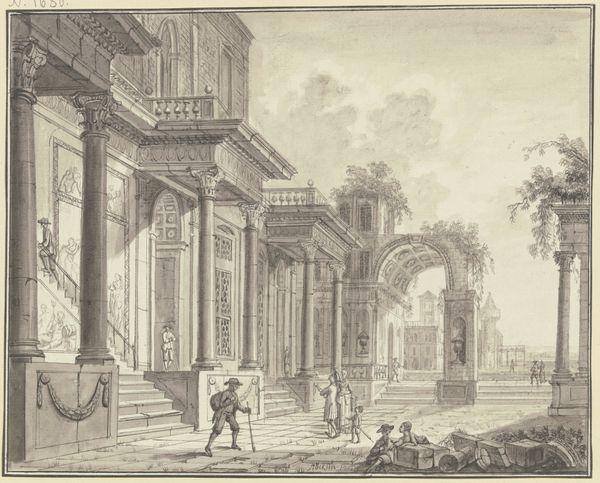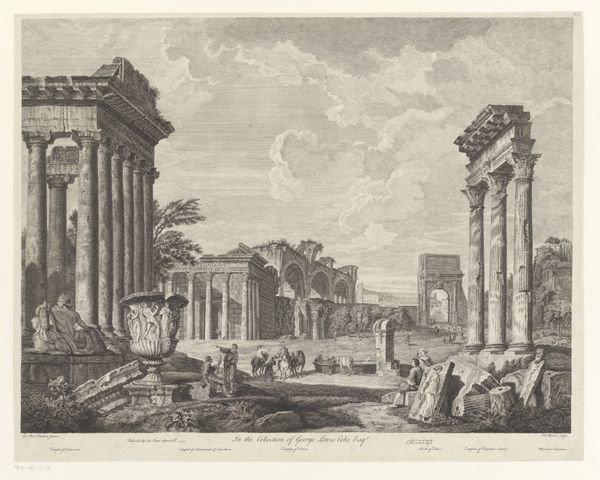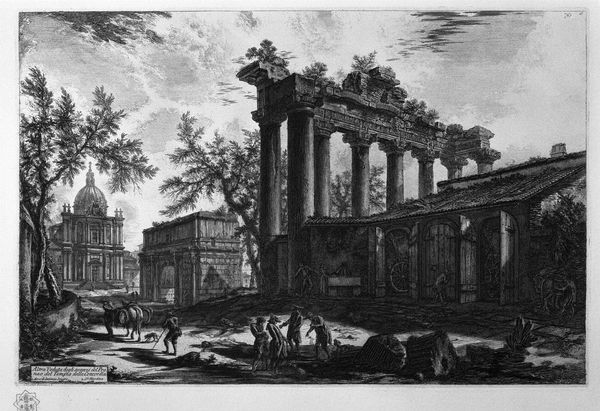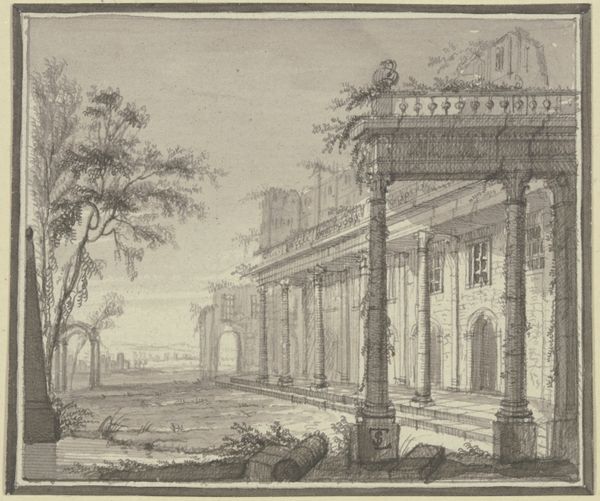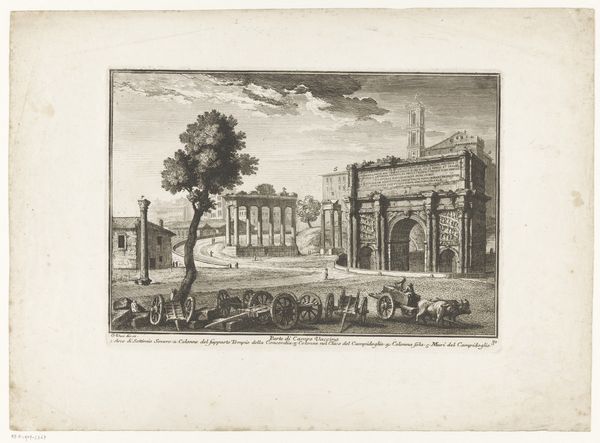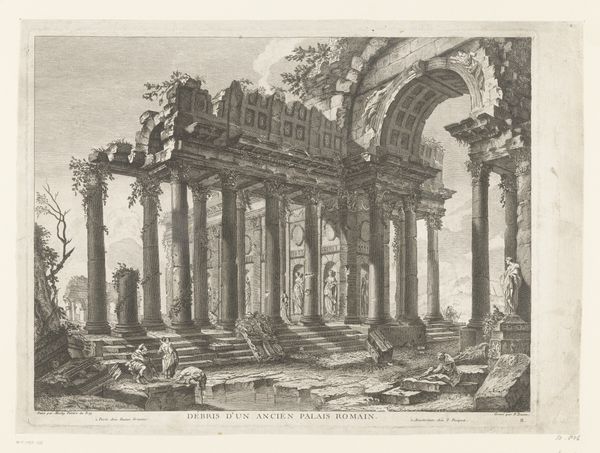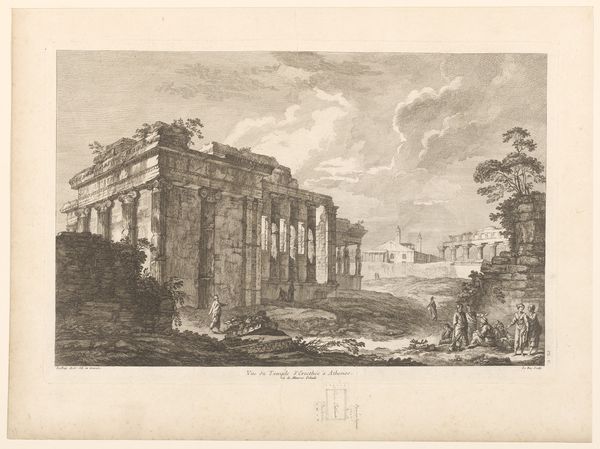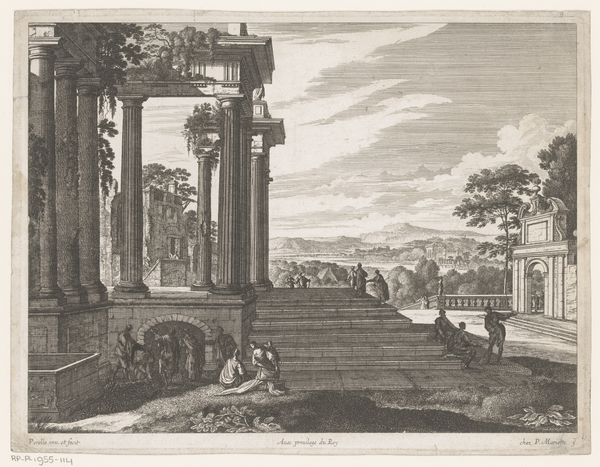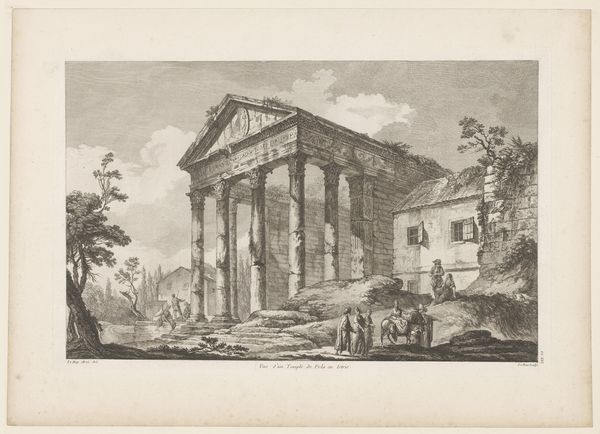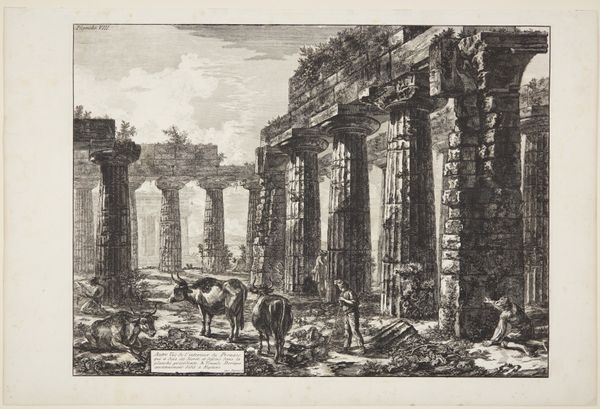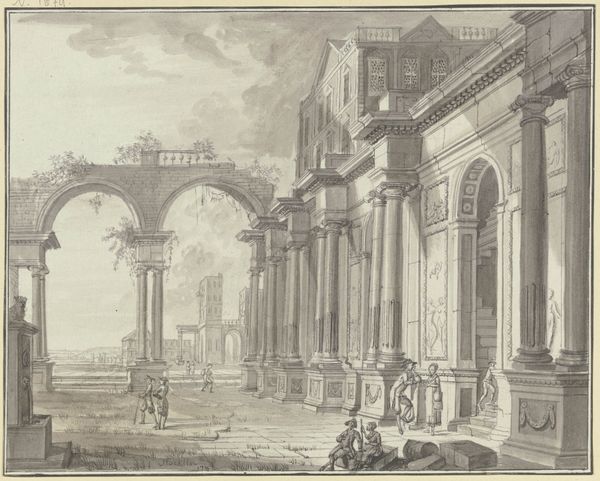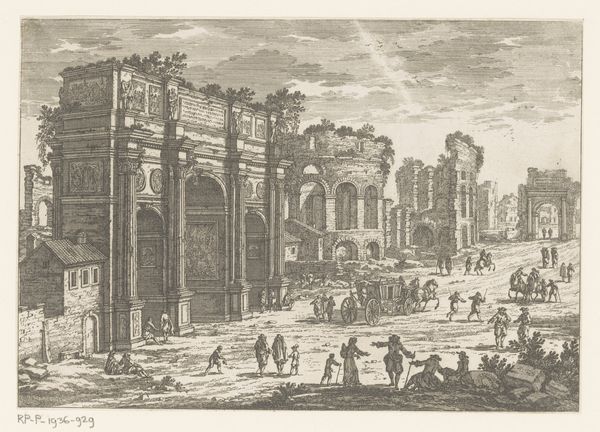
Dimensions: 18 1/2 x 27 11/16 in. (46.99 x 70.33 cm) (plate)20 3/4 x 29 7/16 in. (52.71 x 74.77 cm) (sheet)
Copyright: Public Domain
Giovanni Battista Piranesi created this etching titled, Walls and Pronaos. The print plunges us into a scene dominated by architectural ruins, rendered with meticulous detail and dramatic contrasts of light and shadow. The composition is structured around the juxtaposition of monumental ancient structures and the everyday life that now occupies them. Piranesi masterfully uses line and texture to convey the weight and scale of the ruins. Notice the intricate hatching and cross-hatching that define the surfaces of the stones, creating a tactile sense of age and decay. The imposing columns and crumbling walls suggest the transience of human achievement against the enduring backdrop of time. The play of light across the scene is particularly striking. Strong highlights and deep shadows accentuate the three-dimensionality of the architecture and create a sense of drama and depth. In its totality, Piranesi's work invites us to reflect on the layers of history embedded in the urban landscape and consider our place within the continuum of time.
Comments
minneapolisinstituteofart almost 2 years ago
⋮
This columned portico, or porch, stood prominently at the west end of the Roman Forum. Piranesi thought it belonged to the Temple of Concord, but that structure had been destroyed 400 years before his time. This is actually the remains of the Temple of Saturn, built around 300 CE. In Roman mythology, the god Saturn ruled over a golden age of prosperity, and this building was used as a treasury. Humble structures often sprang up amid grand ruins, and here we see what appears to be a garage for princely coaches. Beyond the temple we can see the Arch of Septimus Severus, which Piranesi examined more closely in an etching shown nearby.
Join the conversation
Join millions of artists and users on Artera today and experience the ultimate creative platform.

